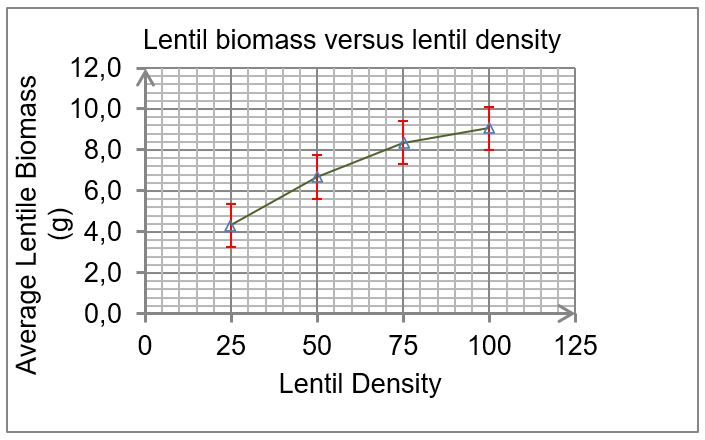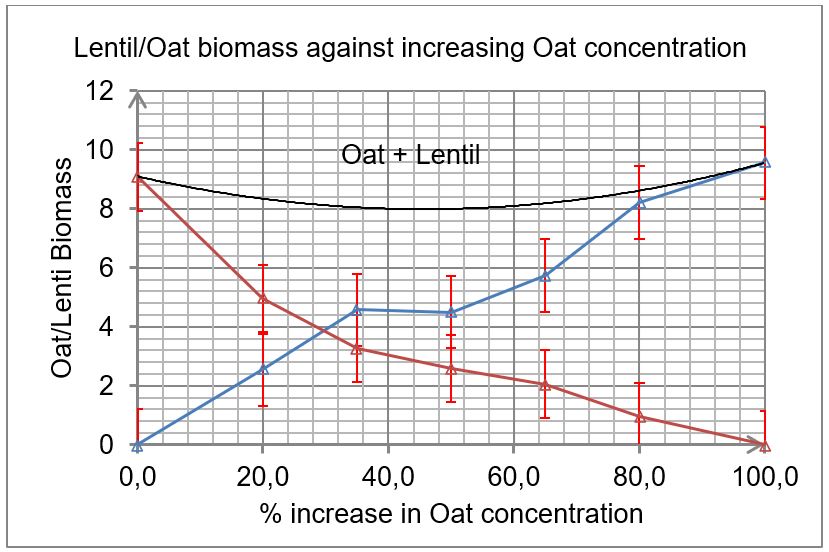Introduction
With the increase in the world’s population in recent years and hence the demand for food, agricultural production has to increase to remain at par with the same lest we lose the entire humanity. Because productive land is limited, it is for this reason that agriculturists are looking for alternative ways to maximize agricultural production. As such, cropping of genetically homogeneous crops has been associated with reduced yield. To curb this, intercropping has been researched to have beneficial effects once the correct ratios are used, consequently minimizing Intra and inter-specific competition. Intercropping can be beneficial if it enhances weed suppression, niche differentiation, and resource use-sharing (Baird, Shirtliffe & Walley, 2009). Moreover, studies have shown that intercropping plays a significant role in declined disease and pest incidences thanks to crop diversification. Consequently, crop diversification promotes a varied niche vital in supporting the survival of various but, beneficial microorganisms and insects (Ofori & Stern, 1987).
To achieve optimum returns from intercropping then the crop species in question ought to vary significantly about phonology and morphology, consequently promoting niche differentiation and positive symbiotic association. Plant density, species ratios, crop architecture, spatial orientation, species life cycle, and the relative task of intra and inter-specific antagonism ought to be factored in when choosing intercropping species to curtail competition in favor of growth (Neumann, Schmidtke & Rauber, 2007).
In recent years, cereal-legume intercropping has been common a practice. This has been reported to have increased grain yield and biomass ratio and hence; reduced production costs. Basically, in this scenario, the legumes fix atmospheric nitrogen which is later utilized by cereals and as such, a grower requires less application nitrogen-based fertilizer to boost the yield. Intercropping oats versus lentils is a typical example of cereal-legume intercropping (McDonald, Hollaway & McMurray, 2007). As such, in this experiment, the essence is to ascertain that there is no competition between the substrates and hence our null hypothesis (H0). This is because in entirely all the occasions when done properly this is what is expected; the overall yield increases.
Importantly, the research design is such that replacement series methodology is used to optimize intercrop gain. This maintains the overall species density while varying the species proportions. Because intra-specific competition might probably play a massive role in changing the population densities which is not captured by the above design, a density series design needs to be run for comprehensive research (Ofori & Stern, 1987).
Methods
In this experiment, the station for the experiment was in a greenhouse. As such, each group of students was responsible for setting up the experiment concerning a set proportion in a tray but replicates. The proportions were such that two crop species (Oat: Lintel) in a tray were varied while maintaining the overall species density in a tray (replacement series). The percentage oat concentration in a tray increased proportionally with a decrease in lintel concentration. The oat concentration increased from 0%, 25%, 35%, 50%, 65%, 80% to 100% whiles the corresponding lintel concentration in a tray decreased in a reverse order. Before planting, the trays were lined with a newspaper before the potting constituent was filled and gently pressed to form a firm seedbed. The seeds were then covered with a thin veneer and, it was regularly watered.
Because itintra-specific competition would probably lay a massive role in changing the population densities which is not captured by the above setup, it was vital for a density series design to be run. As for this, monoculture cropping for both oat and lentil were planted in trays at varying concentrations from 25%, 50% to 75%. As such, the total number of trays for this experiment was 5 and 6 trays respectively for both replacement and density series designs.
The emergency and growth of the two species in both the monoculture and the mixture were then observed and shifted momentarily on every other laboratory session to cancel out external factors. At the end of the experiment, the total dry weight was determined and a better competitor was determined. was
Results
Table 1: trends of the data obtained from the average crop densities as observed in the Replacement series
From the calculations resulting from Table 1, t = 0.722.
From the tabulated values at 95% CI, t6, 0.05= 1.943.
1.943 > 0.722 hence; we reject the null hypothesis (H0) since µOat ≠ µLentil.
Graph 1

Graph 2

Graph 3

Discussion
The objective of performing this experiment was to investigate the effects of intercropping oats and lentils on the overall yield and hence; establish if indeed there was a competition between the crop species. To this end, our null hypothesis (H0) formulated was that there exists a positive competition between the crop species since this is purported to boost the total yield on the harvest. The alternative hypothesis (H1) was that there is no positive competition between the crop species and hence impacting harmfully on the total yield.
The analysis performed at a 95% confidence interval, attests that there exists a negative competition between the intercropping species (t6, 0.05 > 0.722). As such, we reject our null hypothesis in favor of our alternative hypothesis. To ascertain this fact graph 3 of the intercropping experiment asserts that indeed there is a competition. To this end, the kind of competition exhibited by the two species has a detrimental effect on the overall yield. The individual trends in the mixtures portray a concave trend. Consequently, the species do not contribute to the overall yield evident by the fact that the yield at equal proportions (50:50) in the mixture is dwarfed by the corresponding monocultures (Graphs 1 and 2). This trend exhibits the fact that intra-specific competition supersedes inter-specific competition in the mixture. Lentils over-utilized one of the limiting nutrients at the expense of oat which countered the same by casting a shade on the lentils to limit its consumption thanks to its height advantage. As such the overall yield declined (Neumann, Schmidtke & Rauber, 2007).
This study contradicts other studies in the sense that a boost in the total yield was anticipated (Horneburg, 2006). This anomaly can be traced back to the uncertainties due to experimental design. Probably there was variation in some of the limiting growth factors e.g. water and sunlight. Also, moles and rats might have interfered with the ratio. In future experiments, these factors ought to be neutralized to achieve better results.
References
Baird, J. M., Shirtliffe, S. J., & Walley, L. (2009). Optimal seeding rate for organic production of lentils in the northern Great Plains. Canadian Journal of Plant Science, 89, 1089-1097.
Horneburg, B. (2006). Short communication: Outcrossing in lentil (Lens culinaris) depends on the cultivar, location, and year, and varies within cultivars. Plant Breeding, 125, 638-640.
McDonald, G. K., Hollaway, K. L., & McMurray, L. (2007). Increasing plant density improves weed competition in lentils (Lens culinaris). Australian Journal of Experimental Agriculture, 47, 48-56.
Neumann, A., Schmidtke, K., & Rauber, R. (2007). Effects of crop density and tillage system on grain yield and N uptake from soil and atmosphere of sole and intercropped pea and oat. Field Crops Research, 100, 288-293.
Ofori, F., & Stern, W. (1987). Cereal-Legume Intercropping Systems. Advances In Agronomy, 41, 41-90.